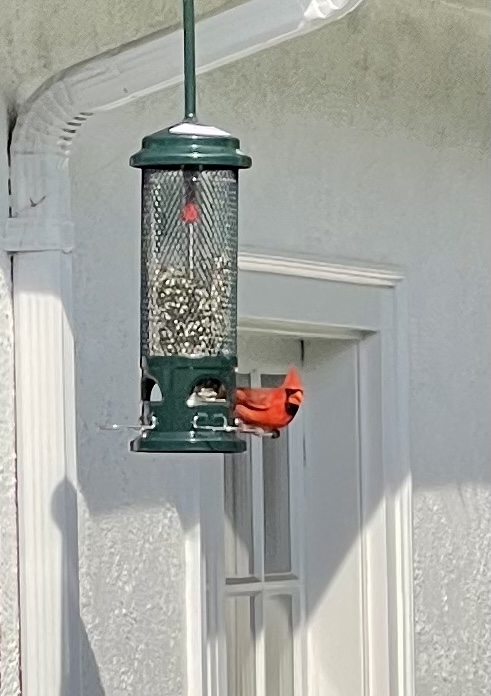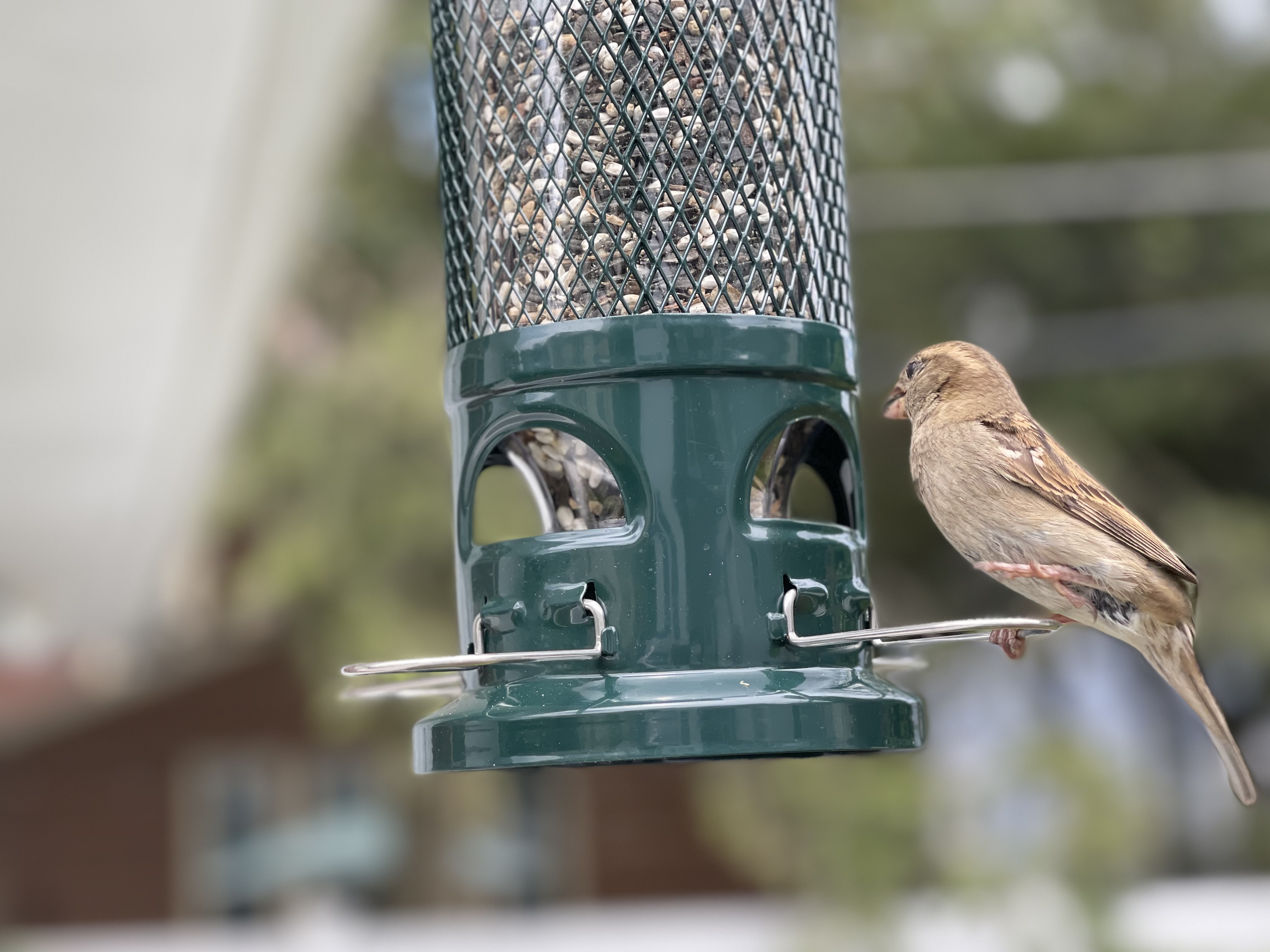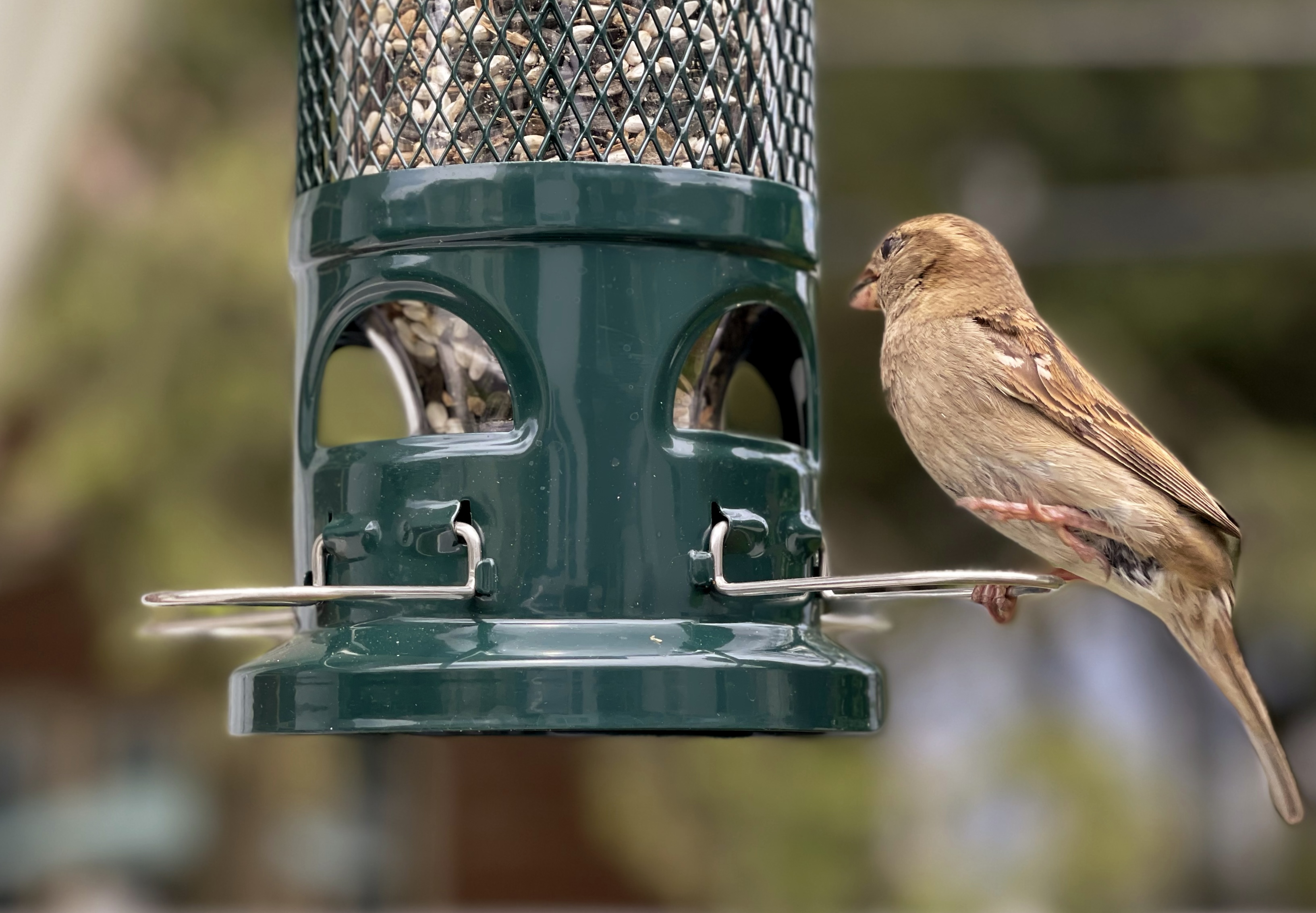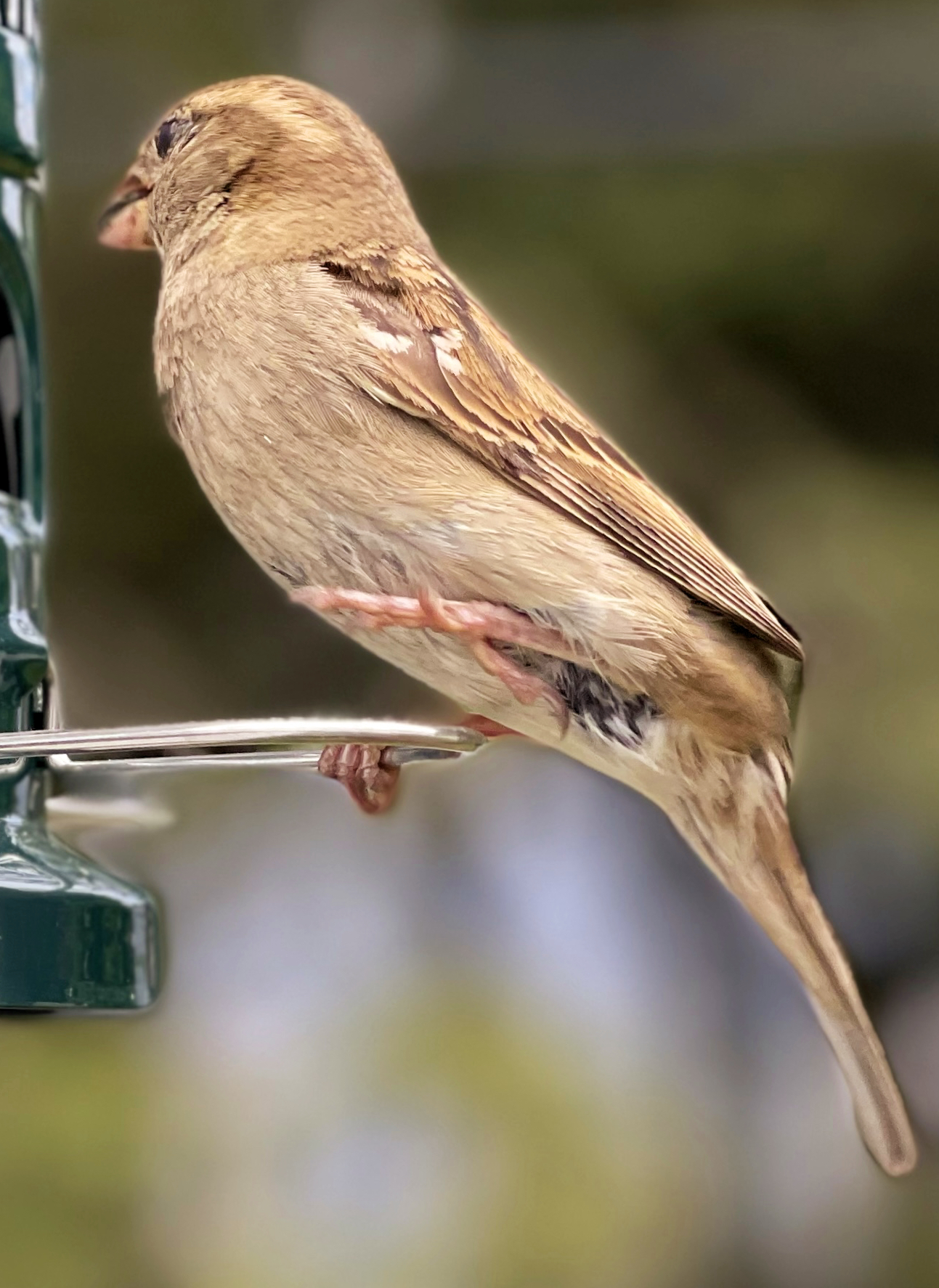Bird Watching
Disclosure: Some of the links below are affiliate links.
Yesterday, I got a bird feeder as one of my father’s day gifts, and it is bringing me so much joy.
The bird feeder I got is the Squirrel Buster Legacy Squirrel-proof Bird Feeder w/4 Metal Perches, 2.6-pound Seed Capacity (Amazon affiliate link). It is an Amazon’s Choice for “squirrel buster,” which is important because we have so many squirrels in the trees in our backyard.
I was told that it could take several days (or longer) for birds to feel safe before they eat from a bird feeder. But the first bird came about half an hour after I hung the bird feed on a hook from the garage’s roof.
I frequently see beautiful cardinals in my backyard and around Rochester, NY. (Some cardinals have a more orange color.) I took the following picture this morning. It shows the new bird feeder and a typical cardinal:

I was thrilled to capture the photo, as my dogs were playing in the backyard, and the cardinal still came by for a quick snack. But I found myself wishing the photo’s quality was better. I took the photo using my iPhone 12 Pro Max. But I had to zoom-in optically beyond the 2.5x built-in to the telephoto lens.
I tried several things to get better photos. I placed the phone on a tripod to eliminate any distortion caused by my shaky hands. That helped, but I found that the images still lose too much detail when you zoom-in optically, beyond the lens’ built-in capability.
The best result that I got so far was when I attached the iPhone to my vinyl fence using an iPhone holder that was probably intended for attaching the phone to a desk. I took the photos using my Apple Watch, which was showing a live stream from the iPhone. See Apple Support’s step-by-step instructions: Use Camera Remote and timer on Apple Watch.
In the following photo, I set to zoom to 2.5x. So, I used the telephoto lens without any optical zoom. I also chose Portrait mode.

I edited the photo using Pixelmator Photo’s ML-enhanced feature, which “[a]utomatically apply Lightness, Color Balance, Selective Color, and other adjustments using a machine learning algorithm trained on 20 million professional photos.” I also straightened the image. I like the changes that Pixelmator Photo made.

The following image shows the result after I cropped the photo:

I will learn more about bird watching, photography, and camera lenses; and in future posts, I will share things that I find interesting. Please post a comment below with any tips you think might help.